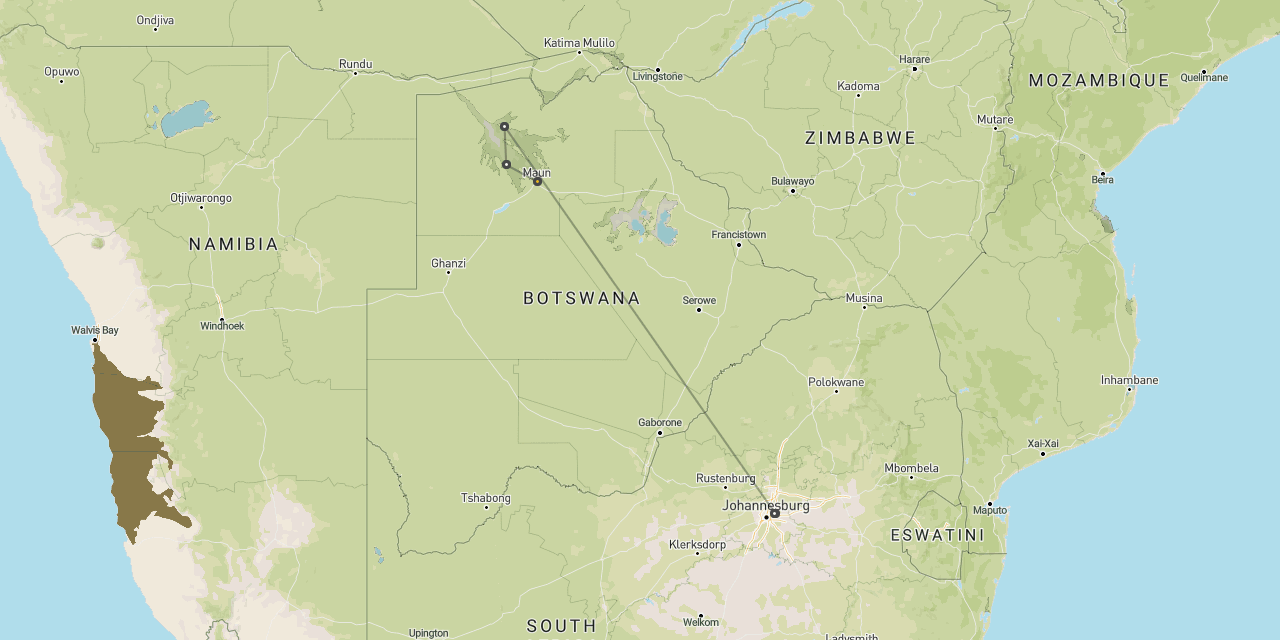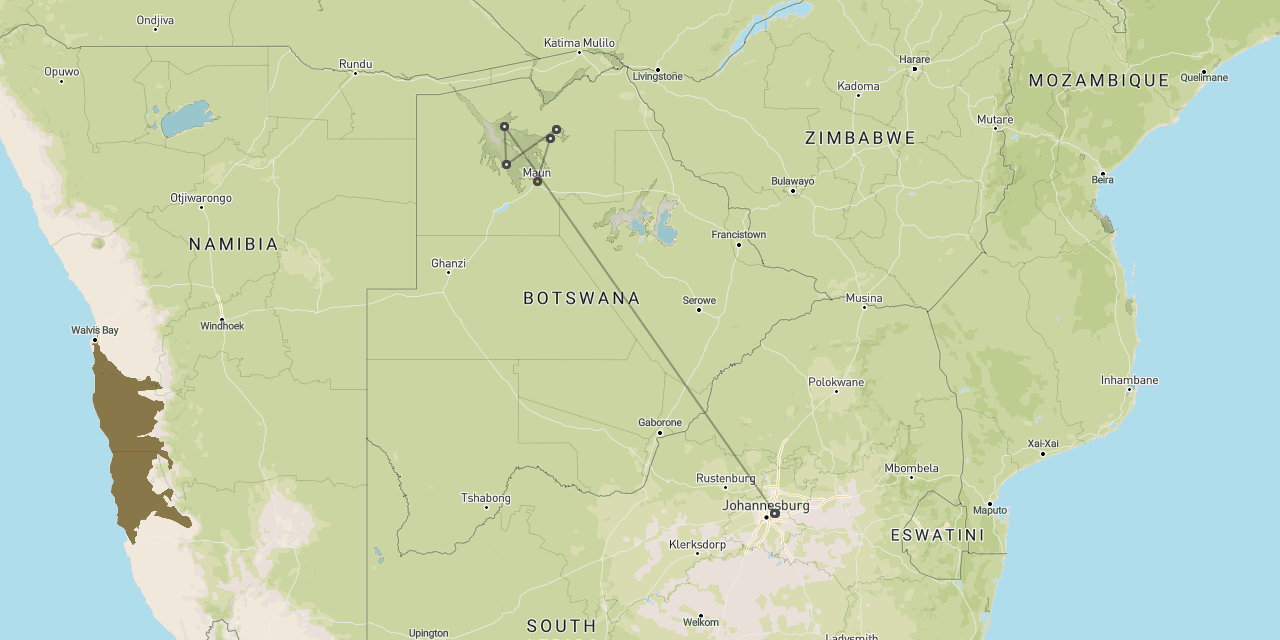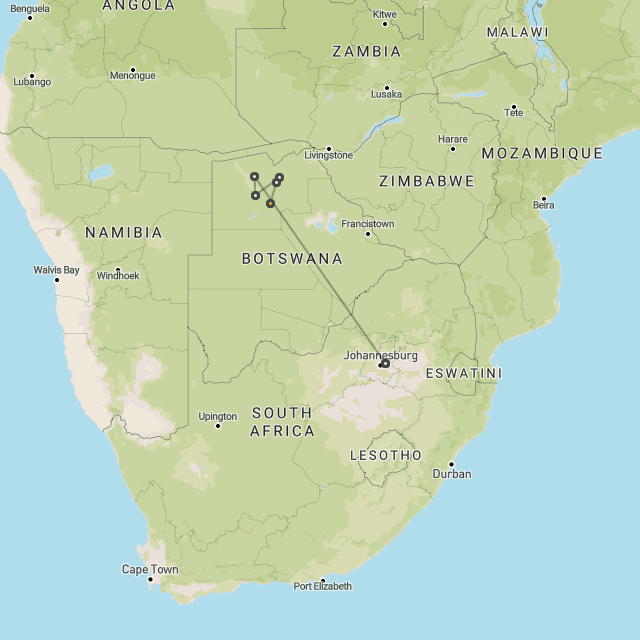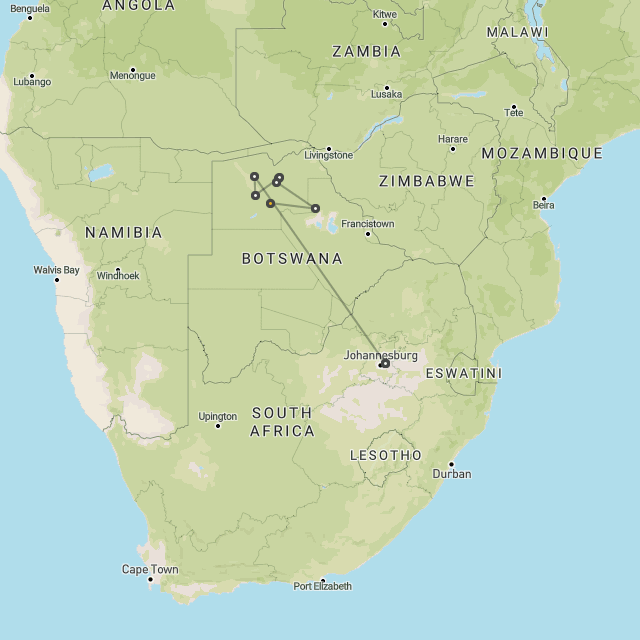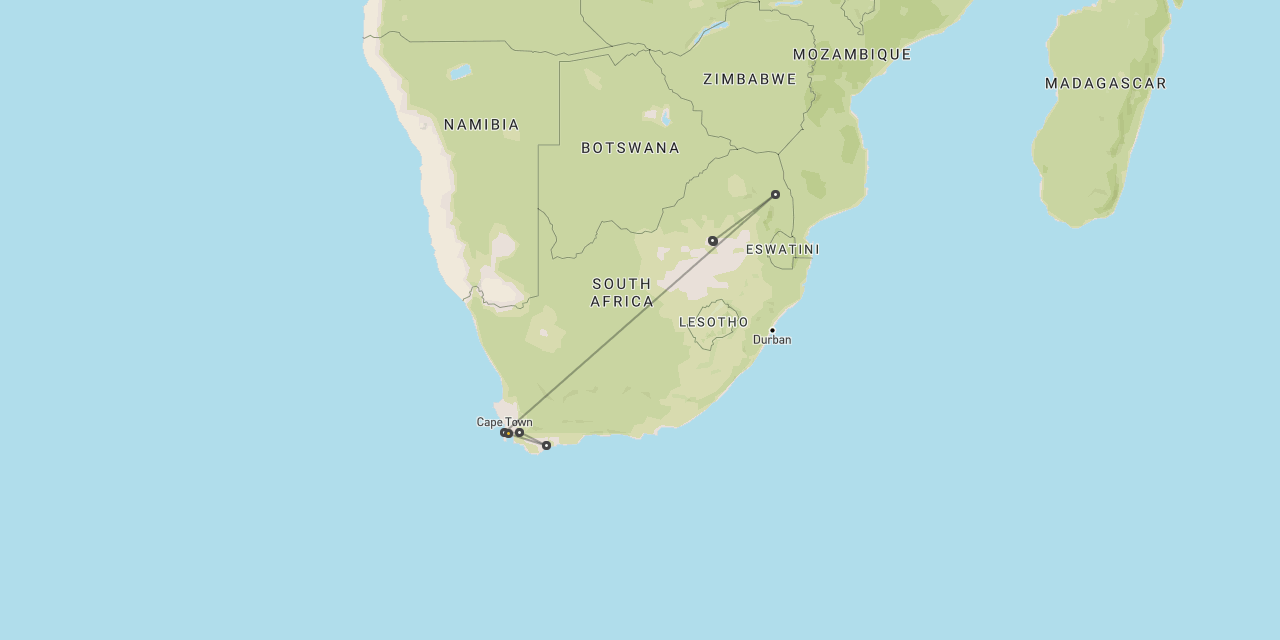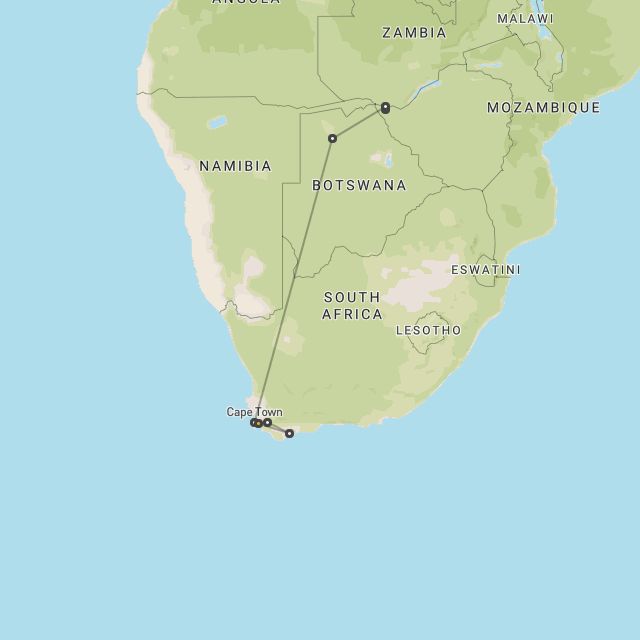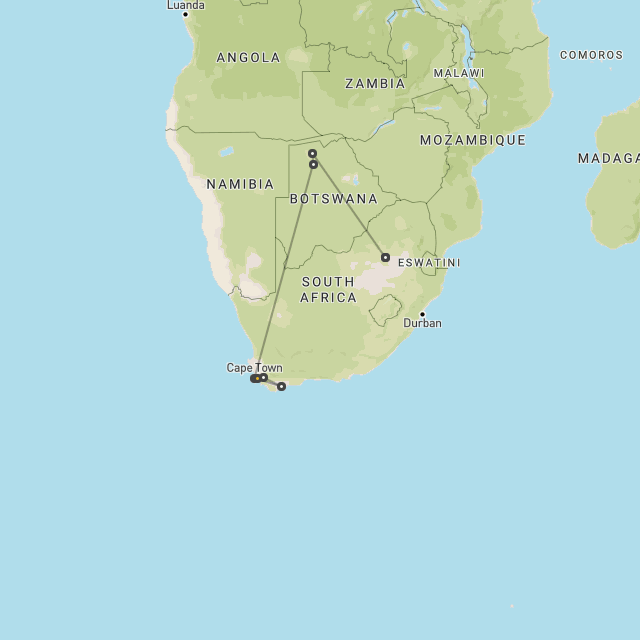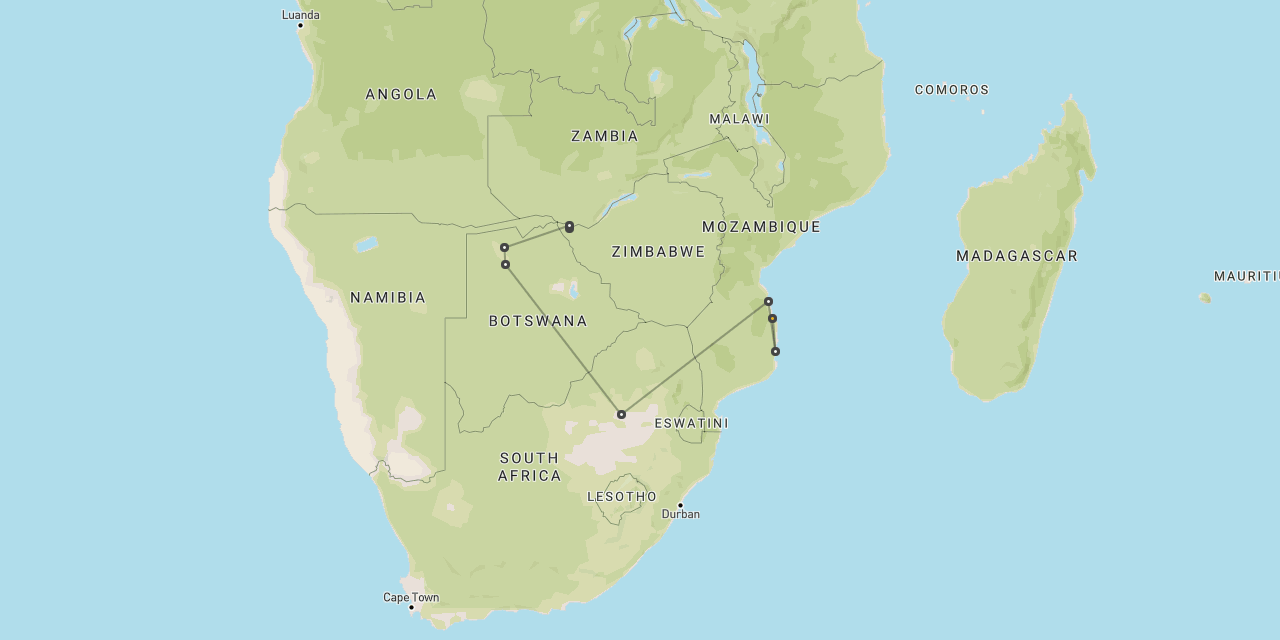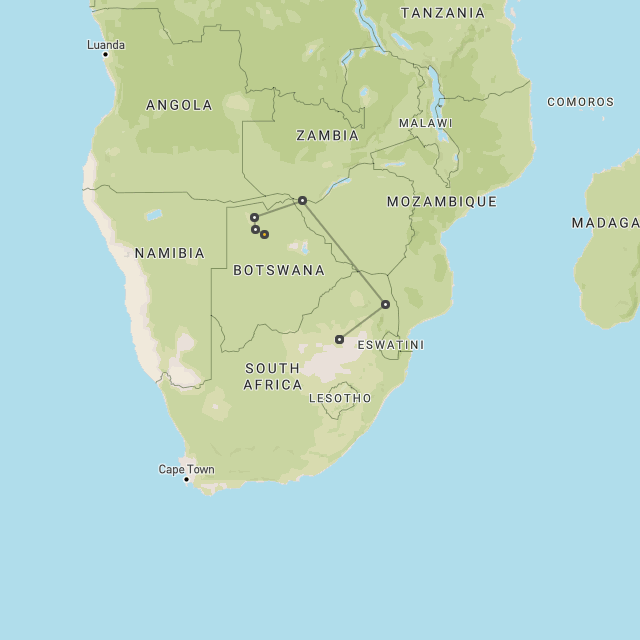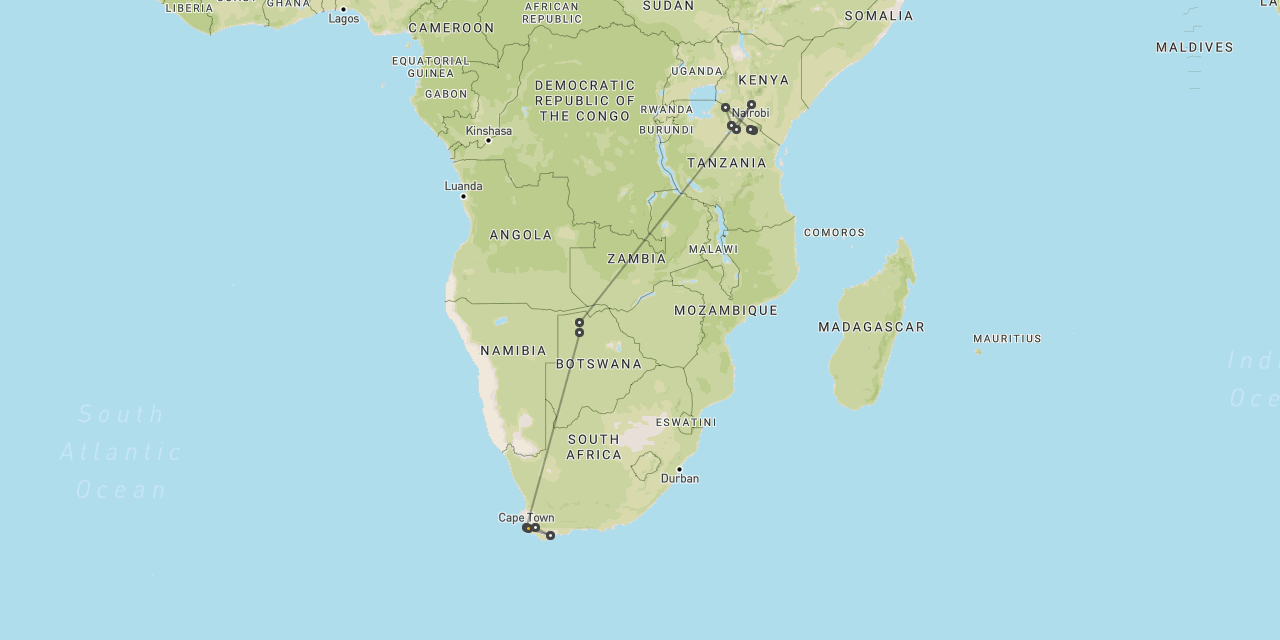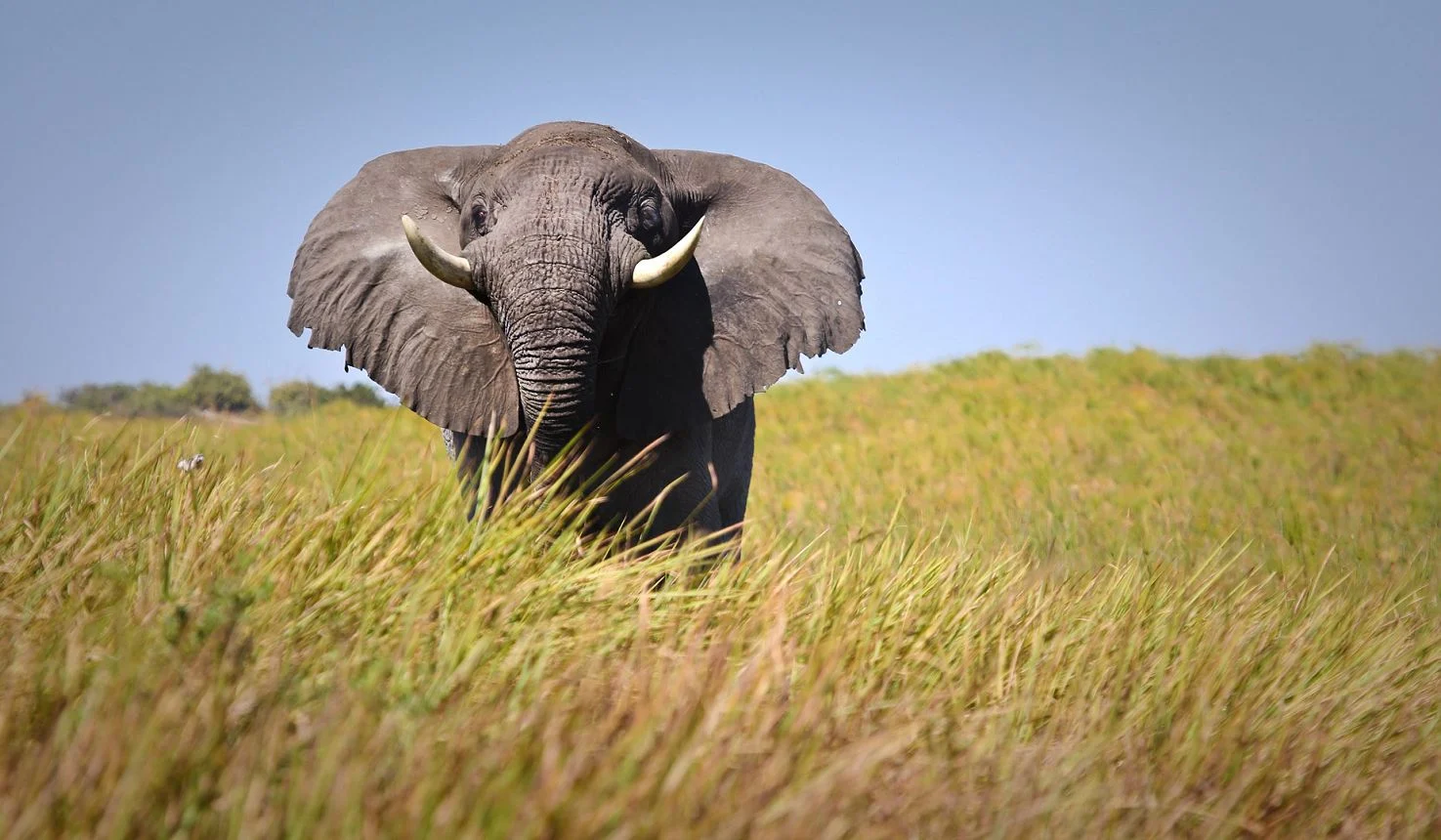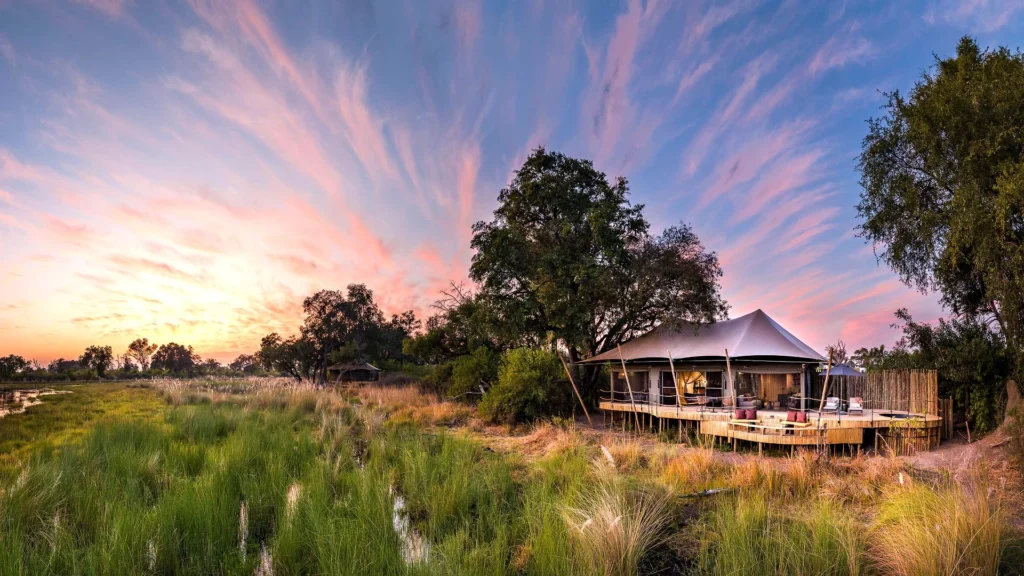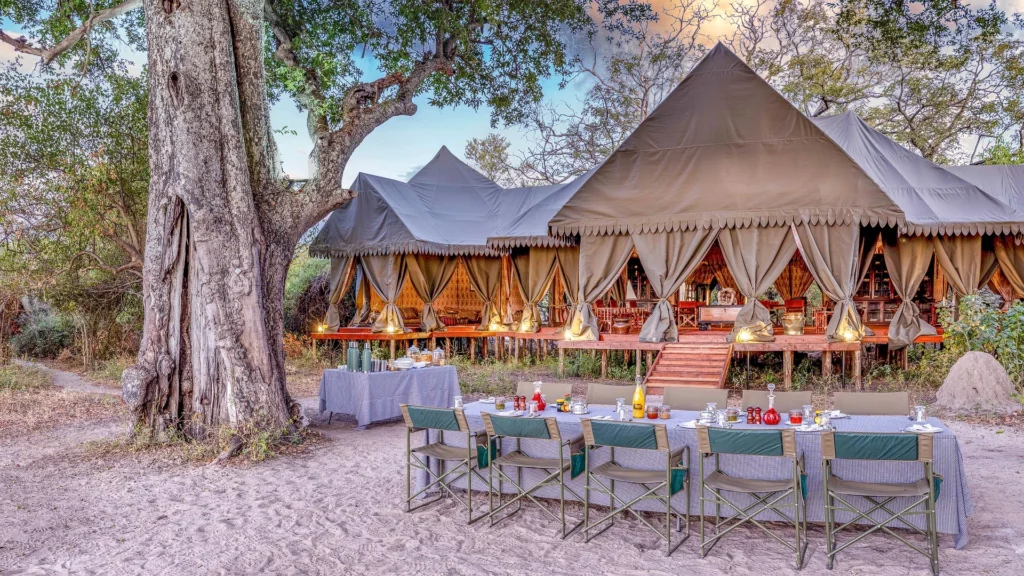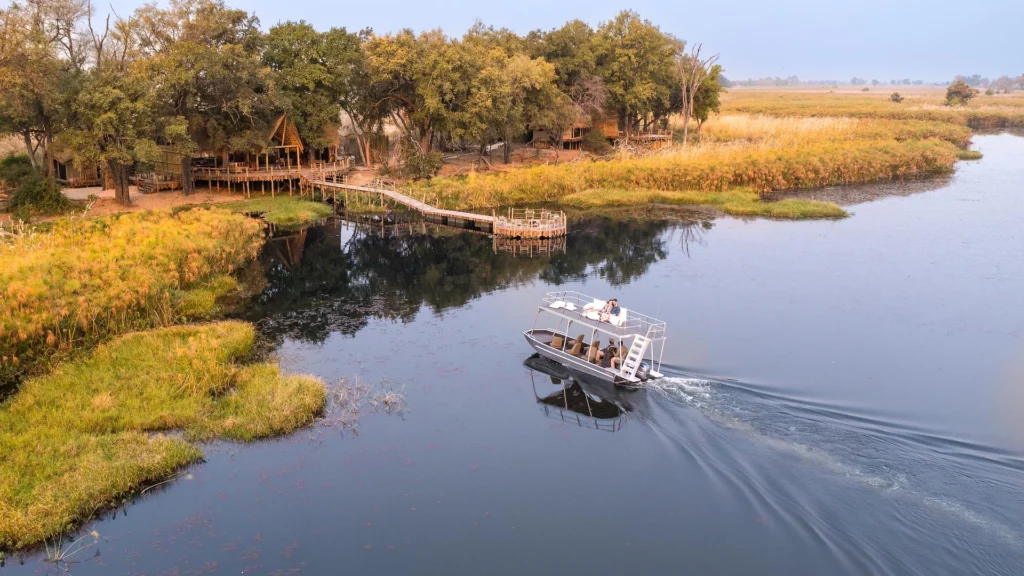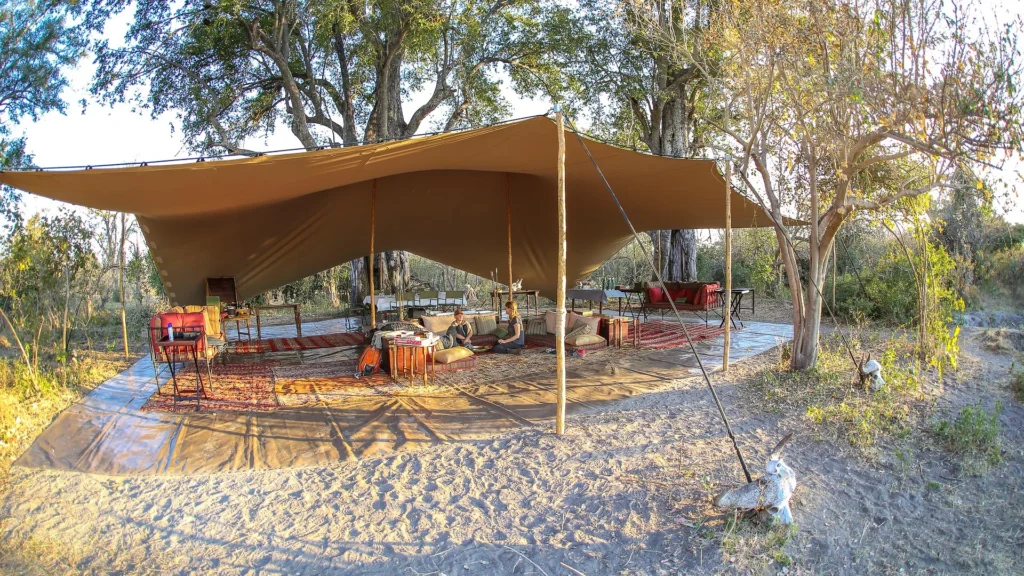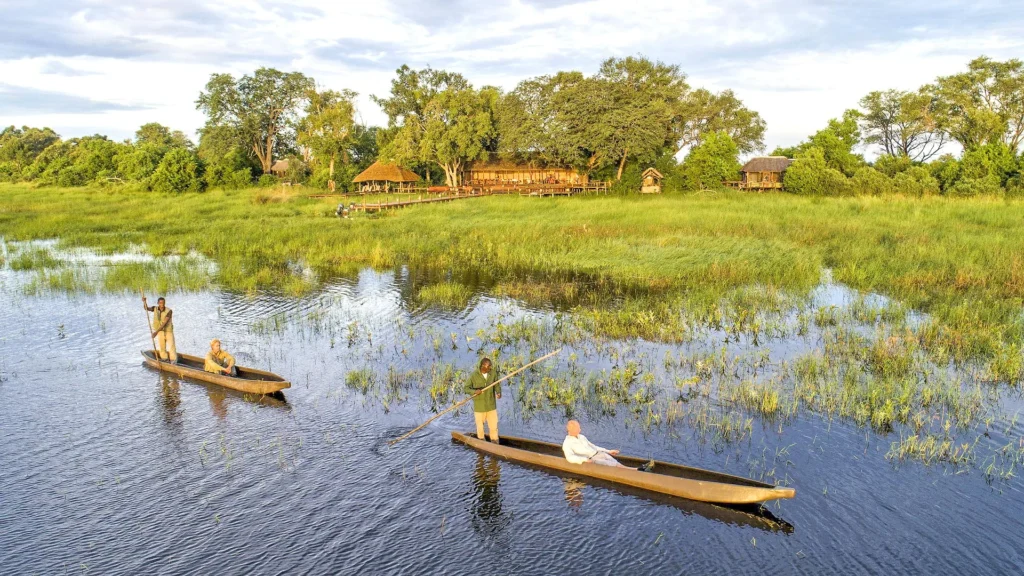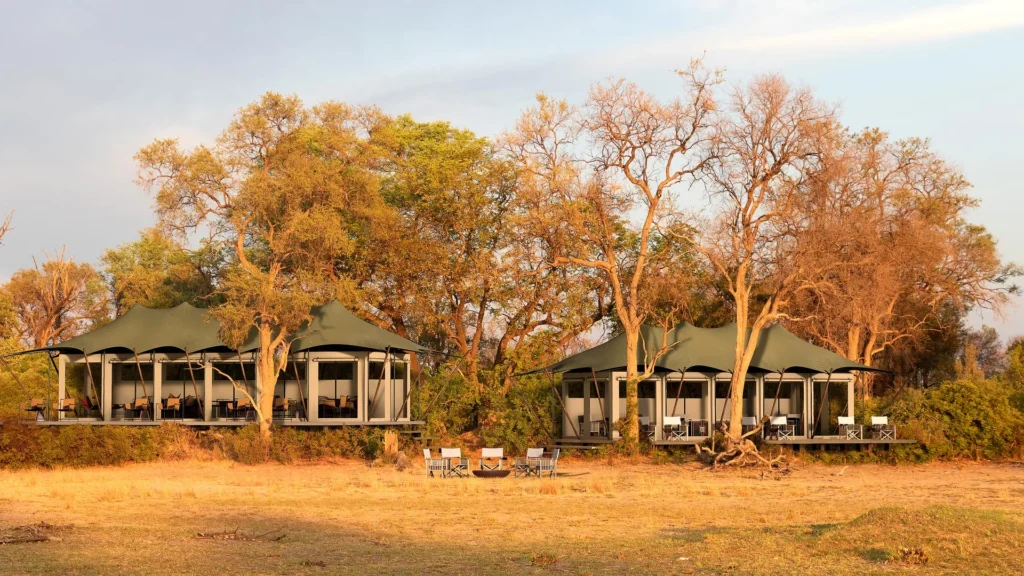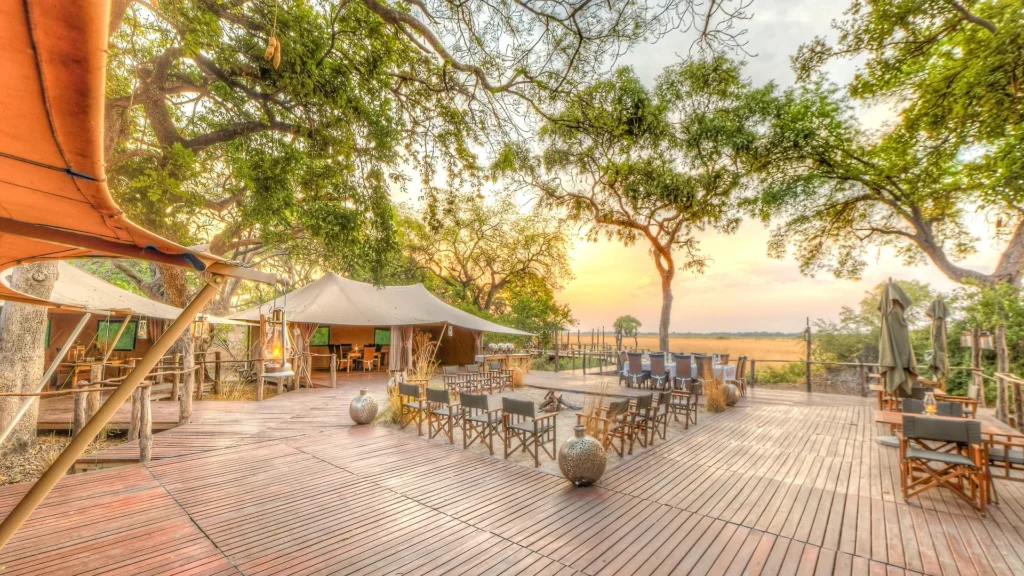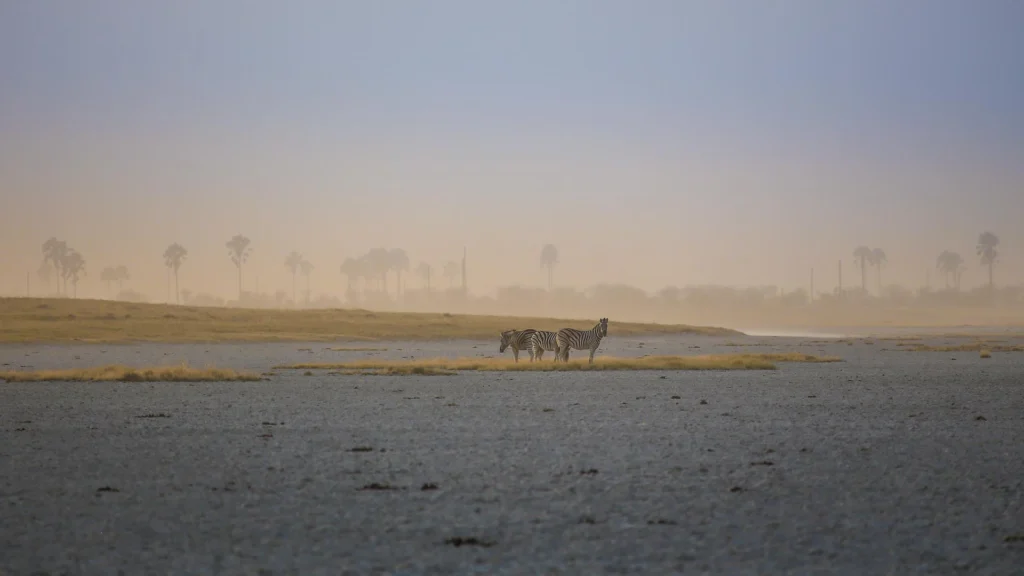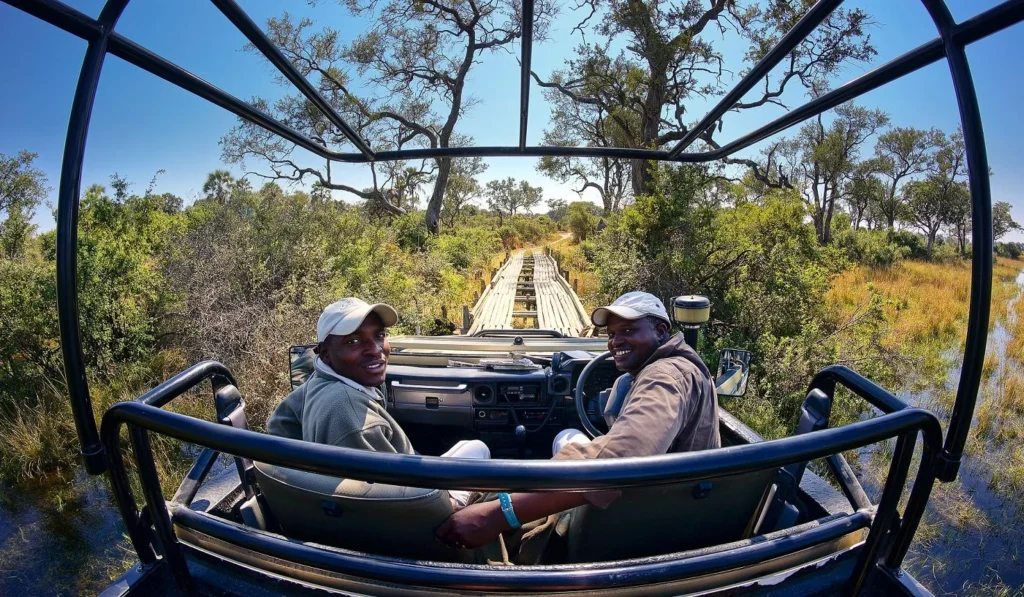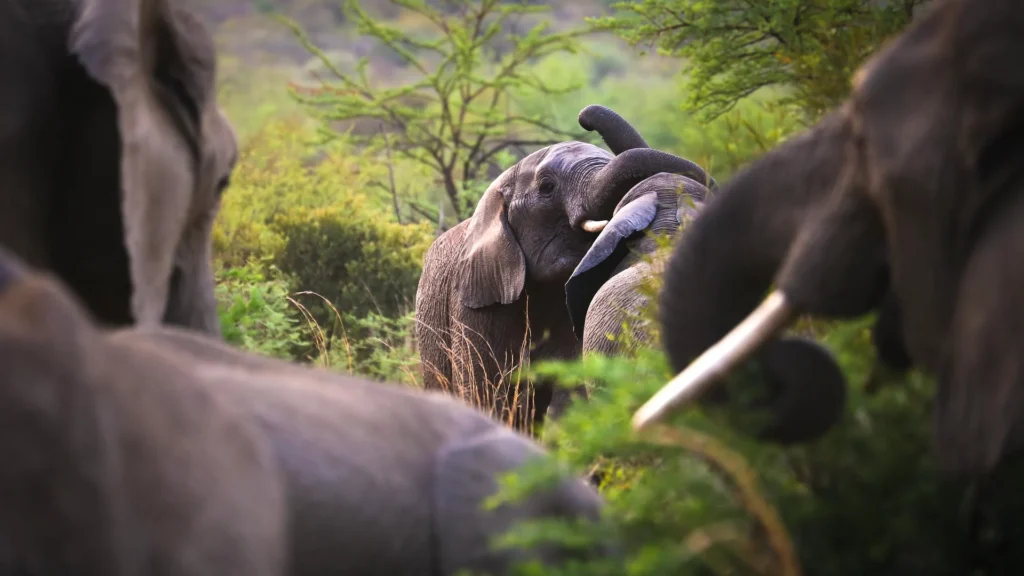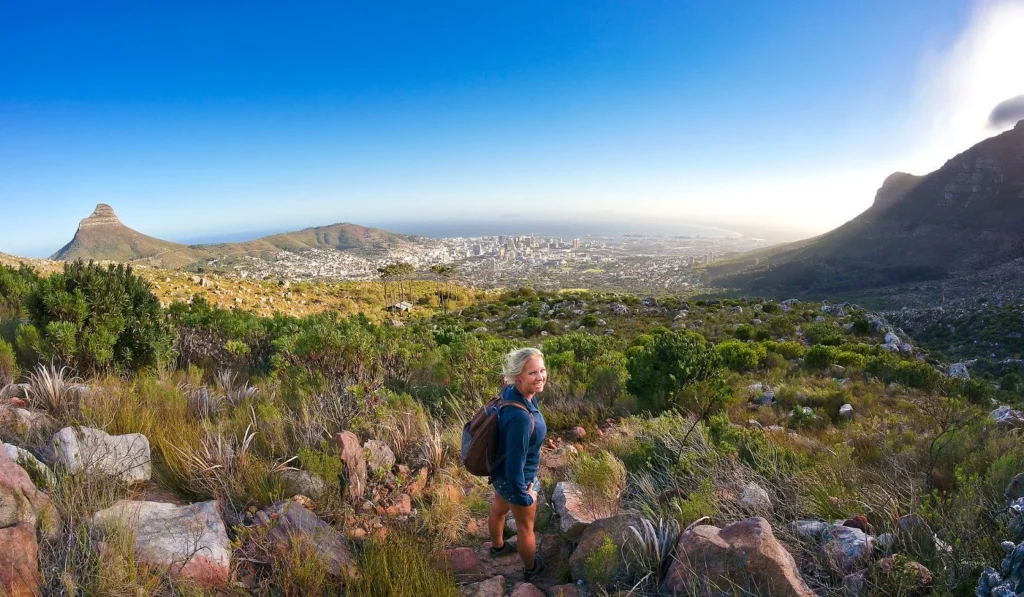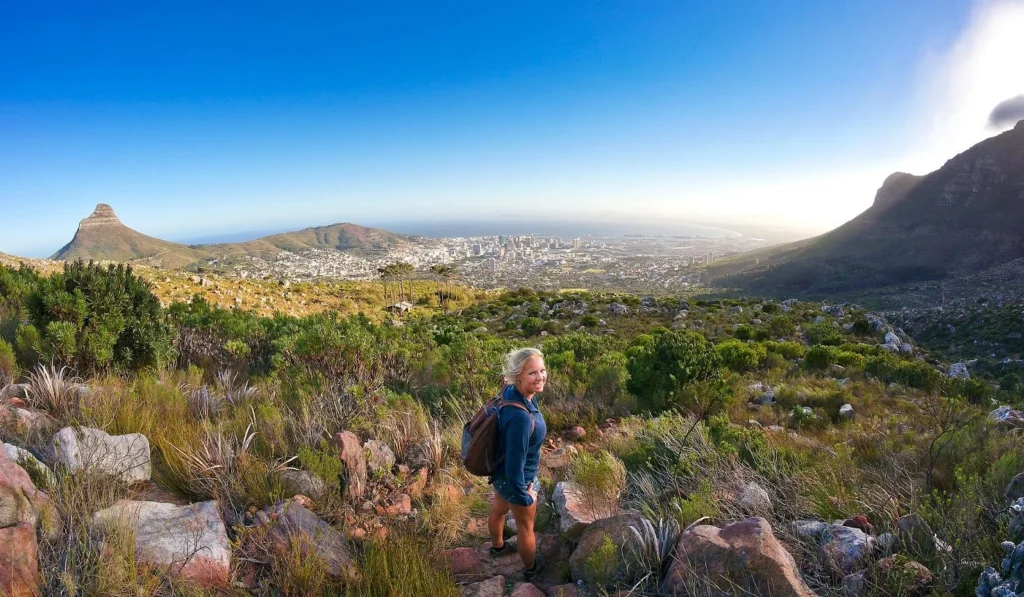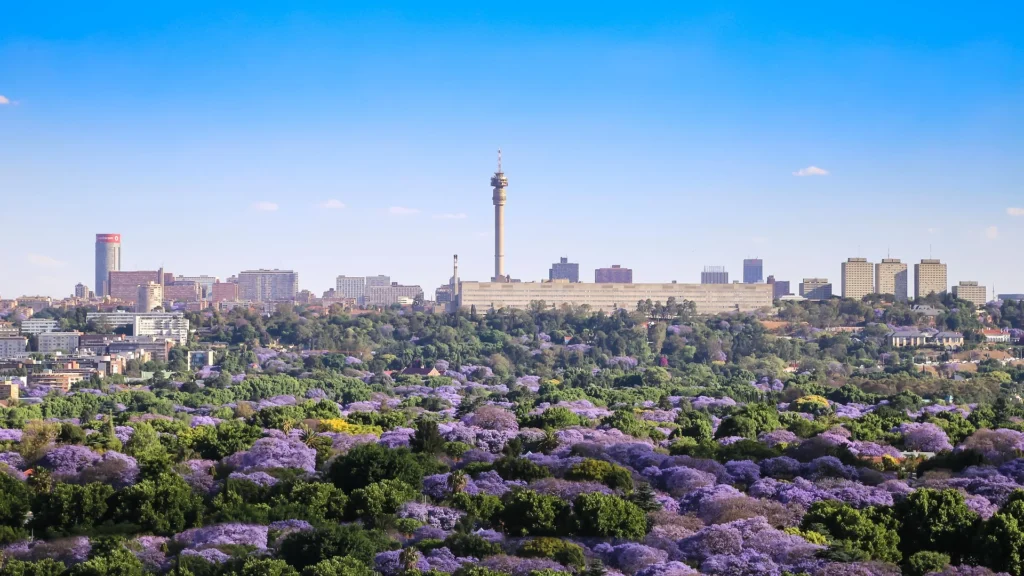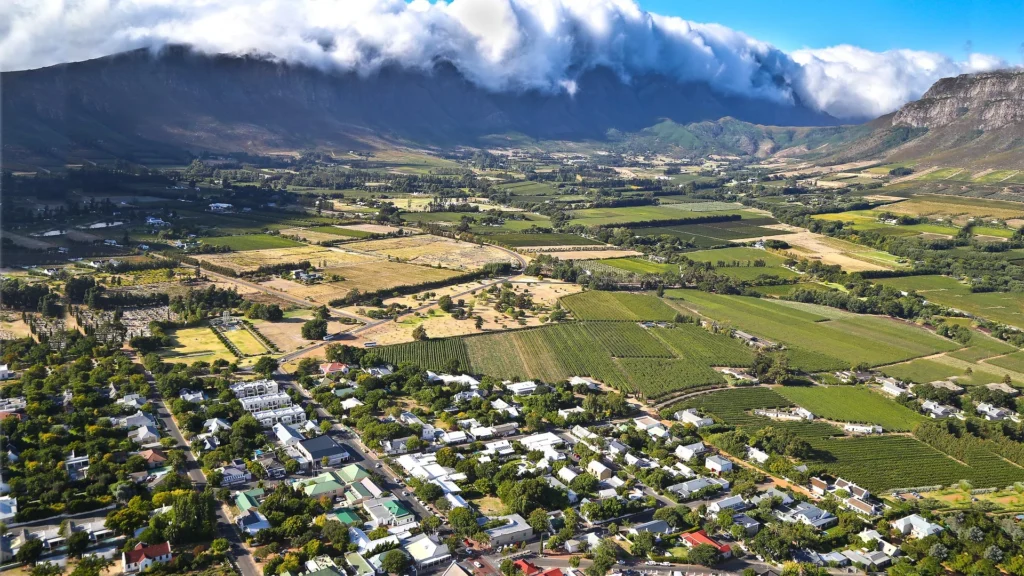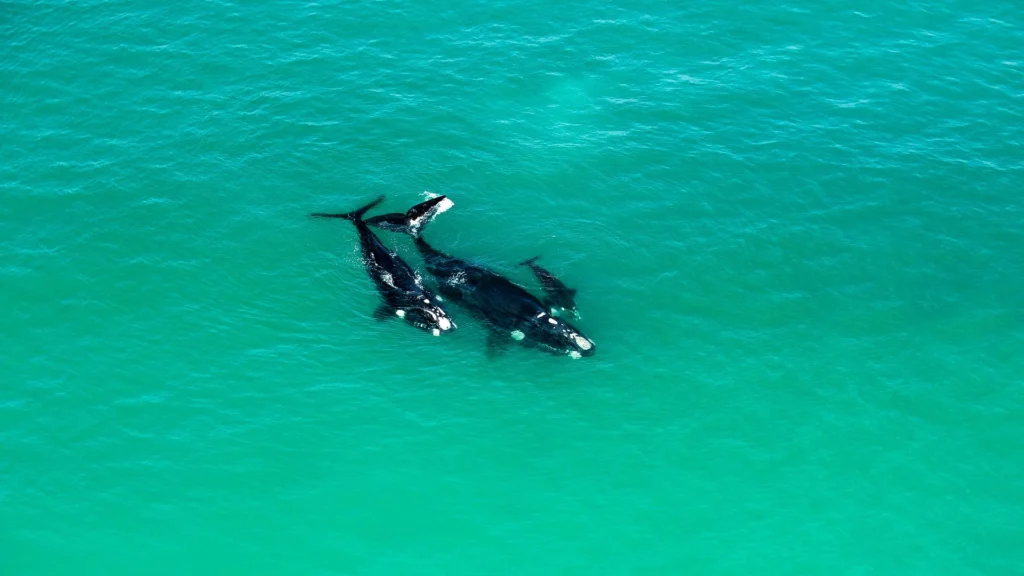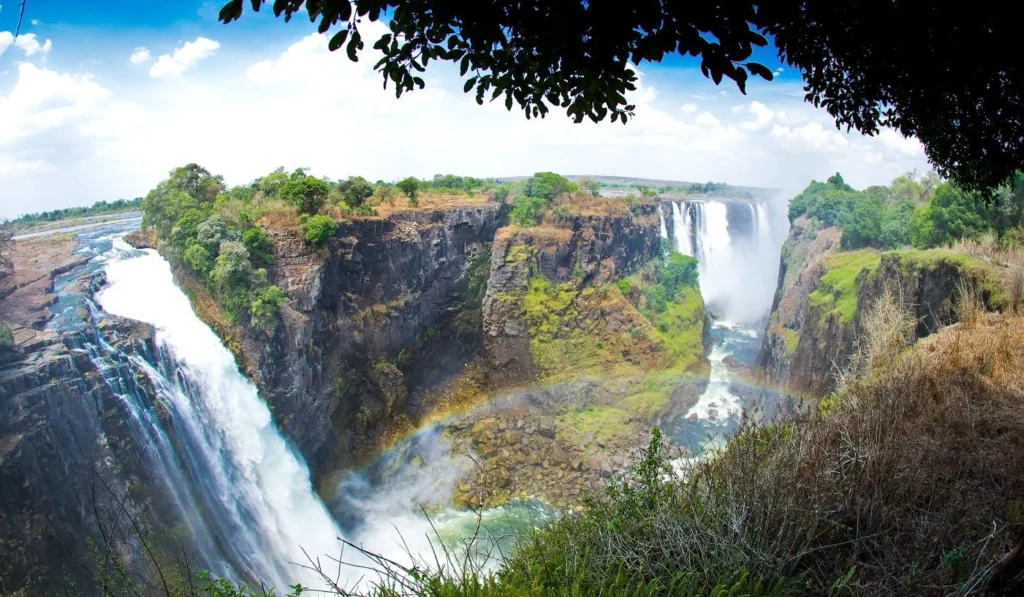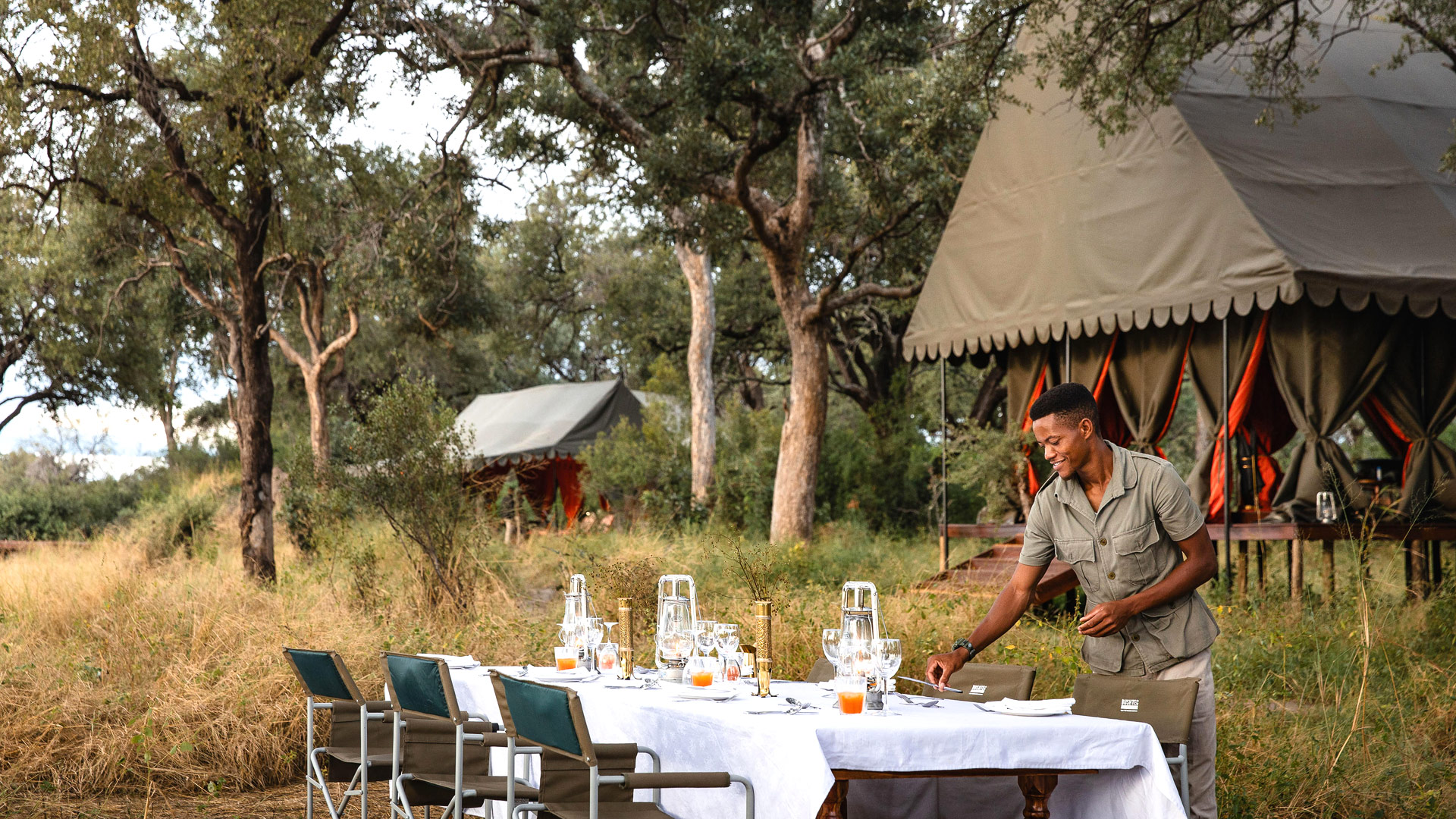
Mbamba
Mbamba
is a characterful camp
with an unusual style
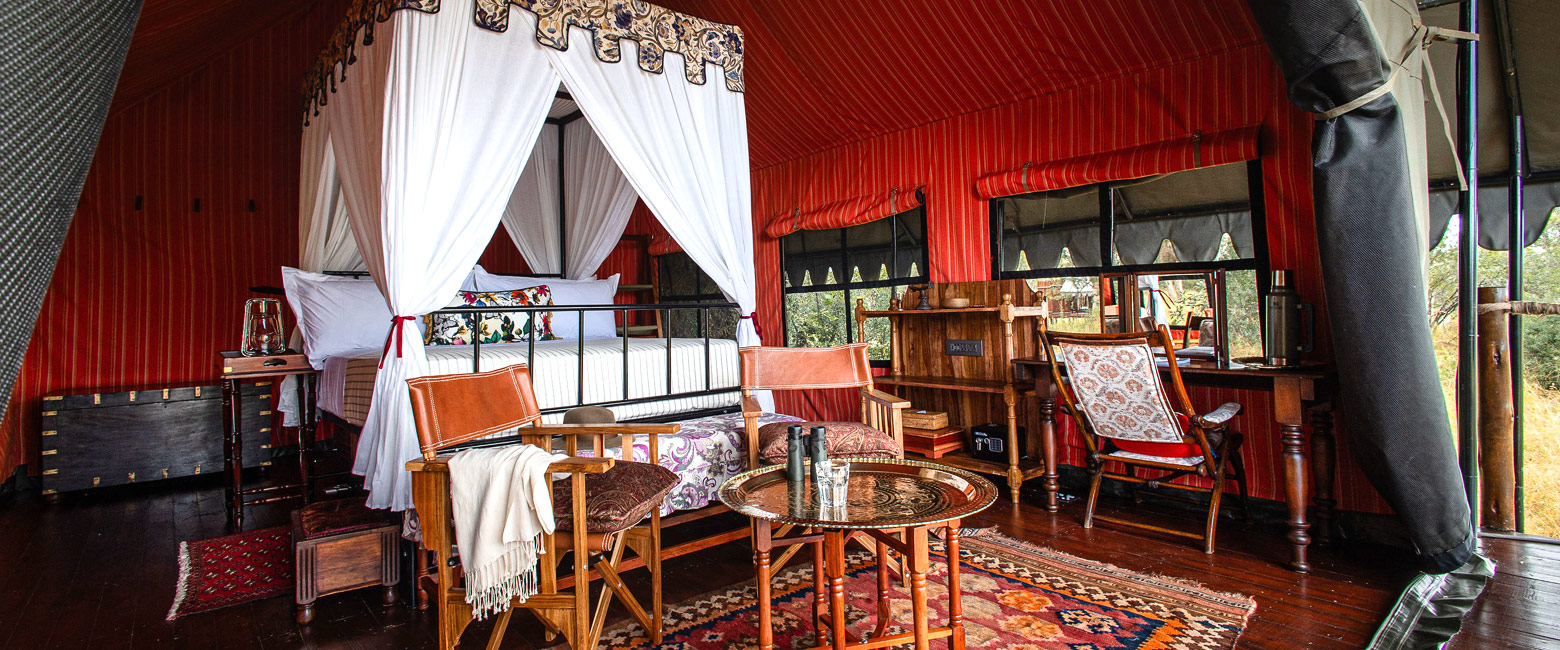
diverse range of habitats
supporting an incredible range of wildlife
Mbamba Camp is located in the Sekwana Concession within the Okavango Delta.
The Sekwana Concession is a richly diverse ecosystem of floodplains, grasslands, riverine forests, and seasonal lagoons, allowing for a good mix of wet and dry safari.
The unusual design for this place takes inspiration from the related Jack’s Camp. Two opulently styled large open lounges are positioned beneath towering leadwood trees with a small pool on one side and a fire pit at the front.
Rooms
Guest accommodation at Mbamba Camp is in 12 spacious tented suites resting on raised wooden decks, each with the characteristic elevated beds and an indoor bathroom. The four-poster bed is centrally located, accompanied by a standing fan and an overbed cooling system. Two of the suites are designed for families.
Activities
Mbamba Camp provides the following guided activities …
- Vehicle safari
- Mokoro canoe safari (Jun-Sep)
- Motorboat safari (May-Oct)
- Walking safari
- Night vehicle safari
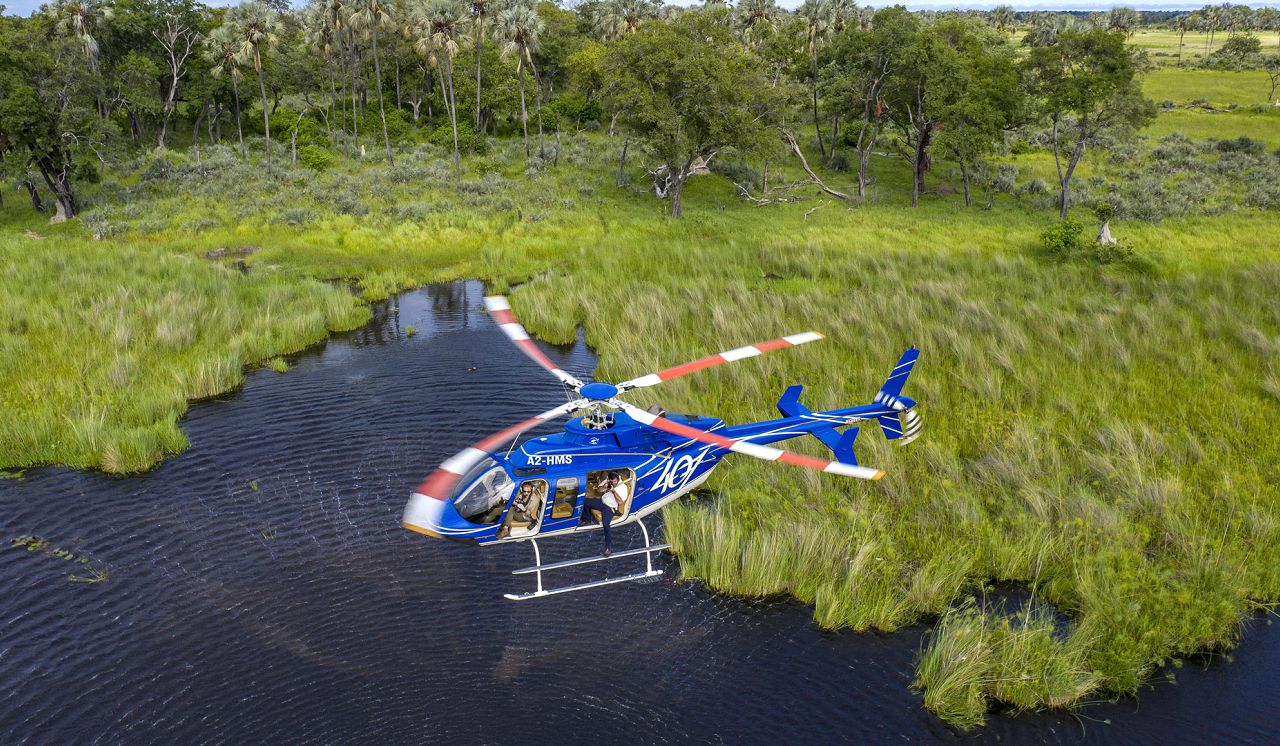
Gallery
Map
When it comes to trip shapes and durations in Botswana, most visitors combine 2, 3 or 4 lodges by light aircraft over 6-12 nights, one or two of which will usually be here in Okavango Delta, combined with the Linyanti Waterfront and/or Makgadikgadi areas.
These trips are often done in combination with further nights at the Victoria Falls and/or down in the Cape.
The usual stay duration here on the Skewana Concession is 3-4 nights.
Seasonality
The May-Jun flood season is a period of transition from the hot wet summer to the cool dry winter and is a great time to visit, with lots of baby animals around and the magical arrival of the floodwater into the delta.
Temperatures can drop towards freezing during the night, but this has little adverse effect on safari, the days are gorgeous and there are virtually no insects around.
The majority of camps are also significantly discounted during this time making it a smart time to travel.
The flood in this western part of the delta is usually early, reliable and heavy, turning large parts of the area into a gorgeous water-world.
Motorboat safari and mokoro canoe safari should be strong throughout this season.
Despite the high flood, all the camps are usually able to offer vehicle safari, although restrictions on the availability of dry land may limit the frequency of sightings.
The Jul-Sep dry season is the classic time to visit the Okavango Delta and is the best time for wildlife viewing, as serious numbers of animals are drawn to the floodwaters which have reached, or just passed their peak.
Cooler temperatures at night may continue but the days are perfect for safari.
This is very much the high season in terms of prices and visitor numbers.
The flood in this western part of the delta should only start to seriously recede into August, meaning that motorboat safari and mokoro canoe safari should remain reasonably strong throughout this season.
As the waters recede, the amount of dry land available for vehicle safari increases and the frequency of sightings should improve.
The Oct-Dec hot wet season is the transition between the peak of the dry season and the start of the rains. Temperatures and humidities can become uncomfortably high in advance of the rains.
If significant rainfall does arrive, it usually comes in short sharp showers and generally has little negative effect on safari conditions. Some animals may disperse after the rains but sightings remain strong.
The majority of camps are significantly discounted during this period.
The floodwaters should be largely gone by this time, meaning that motorboat safari and mokoro canoe safari may no longer be possible.
With so much dry land available for vehicle safari and the clustering of animals around the few remaining waterholes, the frequency of sightings should be at their best.
The period Jan-Apr is the main green season in the Okavango Delta, when the area experiences the majority of its rainfall, in particular Dec-Feb threatens the greatest chance of prolonged cloud and rain.
Temperature and humidity is still high but has dropped from the preceding season.
The majority of camps are significantly discounted throughout this season, making it a very smart time to travel, particularly in April.
Water levels can remain too low for boating activities throughout this period (unless there is an early flood arrival in April). This situation can change if the rains are heavy enough, but this would be unusual.
In terms of wildlife viewing during this period, the lower animal densities due to the outward dispersal from the delta is offset by the large amount of dry land available for vehicle safari, so sightings should remain pretty reasonable. Our main concern would be that elephants may be in particularly short supply, they have a tendency to move to the vast mopane forests immediately to the northwest.
Getting there
All of the camps in the Sekwana area are usually accessed by light aircraft into the local bush airstrip. There are daily flight connections between all the camps in Okavango, Linyanti, the main airport at Maun and Kasane.
From the Sekwana Airstrip it is a drive of around 30 minutes to the camp, with a good chance of early wildlife sightings.
usually combined with related camps
let us know your thoughts about Botswana
and we will make sure to deliver the perfect safari
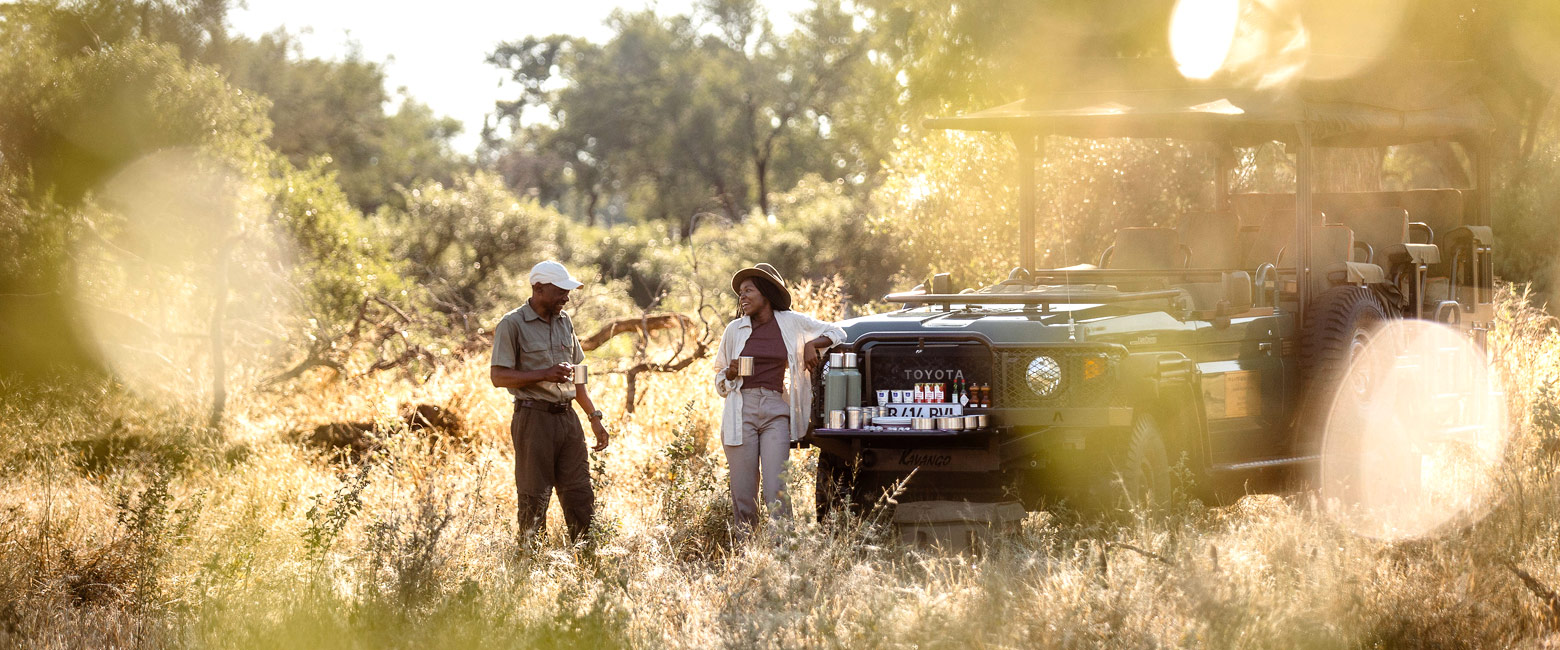
Extraordinary tailor-made adventures,
from earthy and edgy to easy and extravagant
From around USD 2500 per person, you set the ceiling
Sample Trips
Here are some of our popular trip shapes
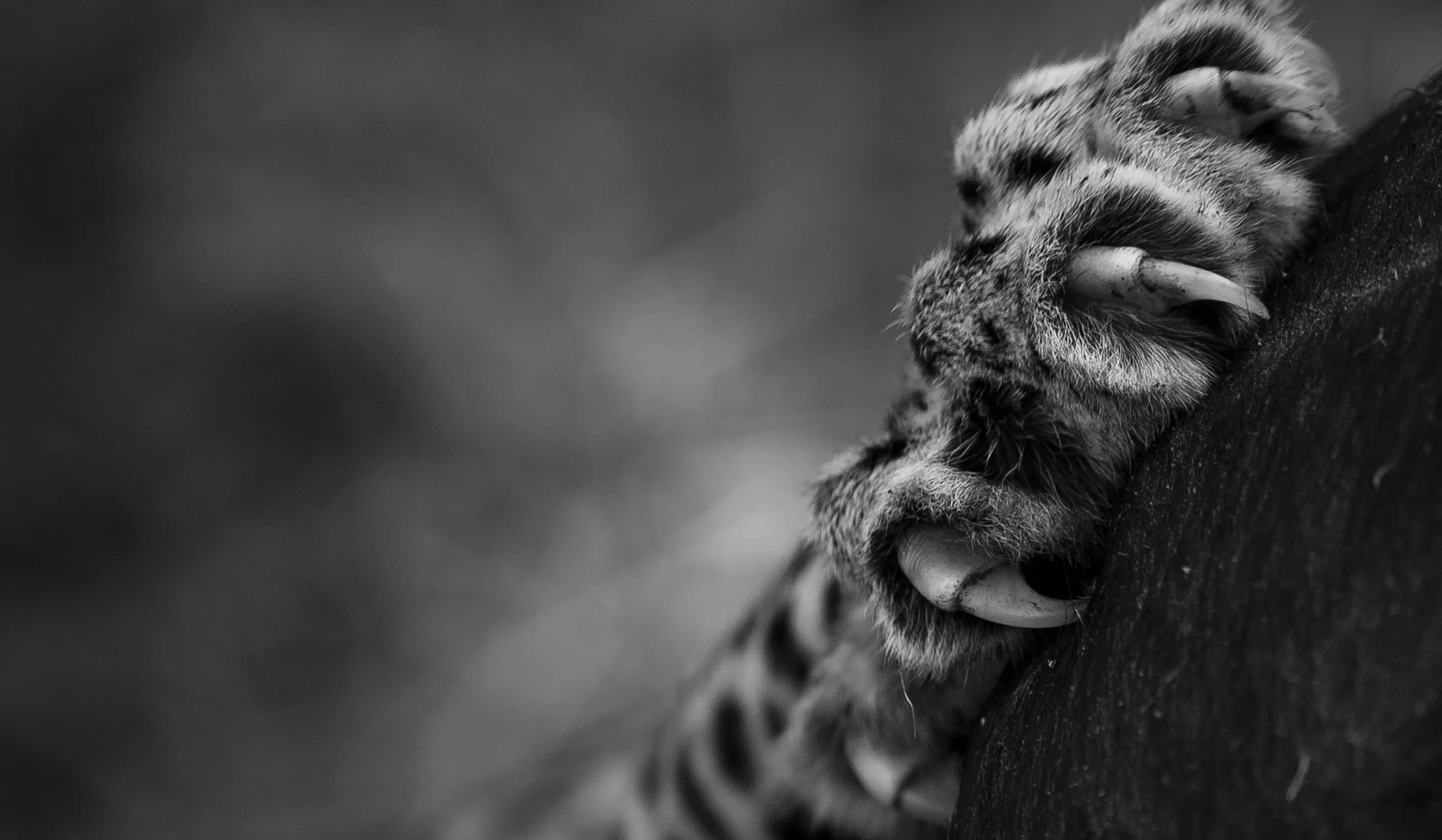
Get started on your trip
It’s never too soon to get in touch, we are here to help with every stage of your planning.
Best Lodges
We regularly inspect and photograph all of the the best lodges, to ensure that we always recommend the most suitable options
Key Locations
Take a look around related locations. Click ‘View more’ to explore locations further afield.
























